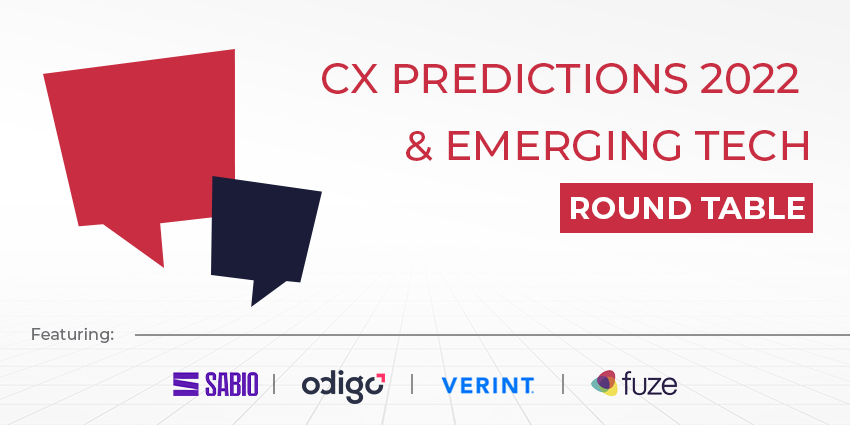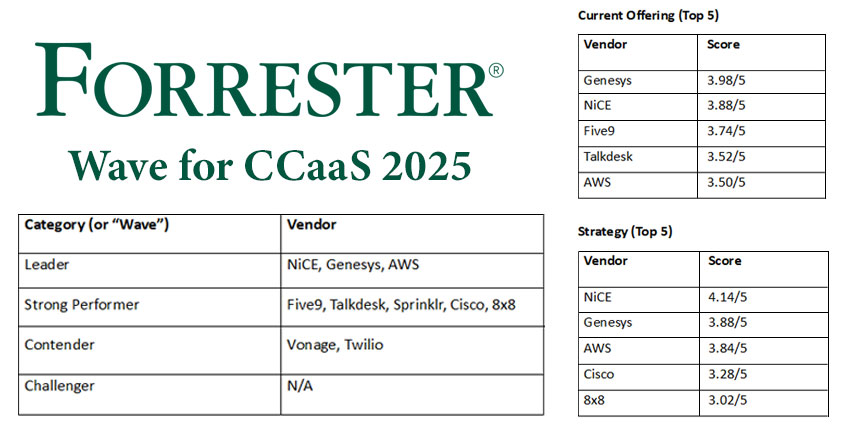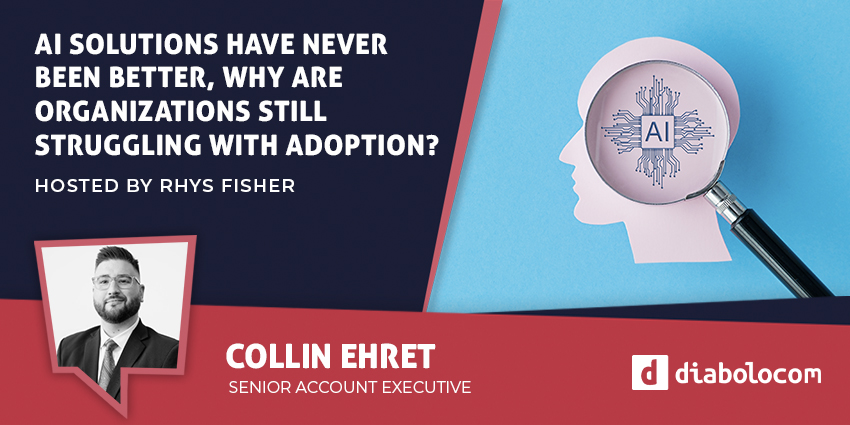As 2021 is drawing to a close, companies are revisiting the ups and downs of the business, the industry, and the tech – what worked really well and what didn’t at all.
Gearing up for a new year full of advanced contact centre solutions, personalisation strategies, and conversational AI, we’ve invited a few industry experts to share their thoughts on what’s coming in 2022.
In this edition of the CX Today round table, we welcome:
- David Singer, Vice President, Product Strategy, Verint
- Ron Calixto, SVP, Global Service Delivery, Fuze
- Chris Haggis, Chief Operating Officer, Sabio Group
- David Noone, Director of Experience Services UK&I, Odigo
Our panellists will discuss major CX trends of this year, what emerging technology will make the biggest impact on CX in 2022 and where CX will be five years from now.
What were the major CX trends/revolutions this year?

Singer: “Contact centers traditionally add digital channels to offload work, but digital and social channels continue to grow and the total volume of customer interactions is also increasing. Asynchronous messaging has also gained traction — customer engagement through social channels such as Facebook Messenger and WhatsApp is becoming the preferred method of contacting customer services over traditional phone, email, and live chat. Organizations need support from workforce engagement tools to handle and recognize these distinctions, especially as social messaging conversations can now span days, not just minutes. This is critical to support accurate forecasting and scheduling, and even quality management programs to support optimal customer experiences.”
The pandemic disruption and the Great Resignation that followed hit contact centers hard and hiring practices have had to shift to address the need to source quality talent. With the work-from-anywhere model not changing any time soon, companies need to be able to attract and interview candidates from a broader geography and potentially without ever meeting in person.
“Intelligent interviewing solutions using voice, advanced AI, and analytics are coming to the aid of contact centers to help pre-assess a candidate’s job-related performance, including their suitability to work from home in a remote worker role.”
Calixto: “In 2021, businesses began to see the benefits of CPaaS to an extent to meet this moment in digital transformation. However, CPaaS is just getting started as businesses need more visibility into their business-critical metrics.
“CPaaS will continue to mature and push the convergence of other cloud-based applications, similar to what we’ve seen with CC and UC, and we can expect to see more enriched integration. Platform-to-platform APIs, integration, and overall technology intersection/combined use is increasing complexity and its critical nature to business at a phenomenal pace.This industry has innovated at a tremendously rapid pace over the past couple years. There’s a huge opportunity for organisations to embrace more ways for business tools to work together.”
“For example, retailers quickly adapted during the pandemic. Industries like manufacturing have institutional norms that have historically slowed these industries from adopting new platforms. However, now, these organisations will be looking for a new flavour of CPaaS to meet their rapidly evolving needs.”
Haggis: “This has been a trend since the Covid-19 pandemic started, but in 2021 we really witnessed a marked increase in brand/consumer interaction levels, with consumers and brands embracing various forms of technology during the customer experience process. Today, organisations – or at least those that are ill-prepared for the next phase in digital experiences – are being overwhelmed by an explosion in interactions through new and improved channels such as live chat, virtual assistants and knowledge-based bots.”
For me, I believe this will trigger, or has already triggered, the next big movement in our industry – which will see the convergence of contact centre (CC), customer experience (CX) and customer relationship management (CRM).”
“Aligning CC, CX and CRM will enable brands with the technologies and data required to provide a unified, end-to-end customer engagement experience – and much like at the start of the pandemic, those brands that are not prepared for this movement or who simply lack an understanding of both the consequences and opportunities that it will bring, risk being left behind.”

Noone: “Curiously this year has been about recognising the role technology and AI plays in helping us making customer experiences more human. During COVID the number of phone calls rose for a complex number of reasons, but no one can deny that if you are lonely or vulnerable talking to a real person is invaluable. We can throw all the technology in the world at customer experiences but interacting with AI systems will not make a customer feel valued. No one is loyal to a computer. Loyalty, empathy, understanding and helping vulnerable customers are all made possible by empowering agents though technology. Not the technology itself.”
“Research by the CCMA revealed the startling extent of vulnerability in UK adults. Here is a key area where understanding of the complexities of human condition, which can only be achieved by agents, can actually achieve what customer experiences should be all about, helping your customers. This humanising lesson will help decision makers continue to balance the customer experience equation, by taking into account both the drivers for efficiency and convenience and the more traditional soft skills that often seems like old news.”
Which emerging technology will have the biggest impact on CX in 2022 and why?
Singer: “There’s a significant competitive advantage for contact centers that equip their agents appropriately to gather customer insights to address customer needs with immediacy and empathy.
In 2022, we will see widespread adoption of sentiment analysis tools to help organizations understand and engage with customers on an empathic level versus a transactional level. To support this dynamic, real-time speech analytics automatically senses and detects customer intent and emotional state to help guide agents as to the next-best actions.
“This technology now analyzes 100 percent of every interaction, providing a consistent and objective voice of the customer evaluation by agent, category, and call topic. Now organizations can fully understand the sentiment a brand generates – what sentiment your employees are providing and what sentiment your customers are feeling.”
“The work-from-home dynamic increased the need for in-the-moment guidance to help agents that no longer have onsite supervisors or peers for consultation.”
“Real-time agent assist and intelligent virtual assistant solutions dominated the list of the top contact center technology solutions organizations invested in in 2021. When customer service interactions involve negative sentiments, customer complaints, escalations, long silences, or multiple interruptions, real-time assistance can be the difference between a satisfied customer or one lost to the competition.”

Calixto: “Gartner reports that by 2025, enterprise spending on advanced CPaaS tools (rich communications in omnichannel, AI and bots, video and visual builders) will rise from 25% in 2021 to 50%.”
“In 2022, we’ll see CPaaS 2.0, which is about full integration with other business platforms. This is critical as businesses will become more focused on customer-centricity, not just on their own business outcomes, but on their customers’ success and metrics.”
“Customer-centricity is our customer’s customers. The focus on internal change management is already shifting to organisations that place high value in partnerships, not just vendors, that make it easy for their customers to be a part of an interconnected CPaaS 2.0.”
Haggis: “I think that voice is still an extremely critical channel with all CX and CC technologies – but the key will be to unify it with other channels such as chat, email and SMS for example. The potential for rich data and the intelligence and opportunities that come with that data is going to have a major impact in 2022.”
AI, ML and speech recognition is excellent and all well and good, but the data within these voice channels is, at the moment, massively under-exploited. That’s despite, according to Salesforce, 76% of service professionals saying that voice is the preferred channel for complex issues.
“At the moment, a lot of the larger technology leaders in the CX space, of which most are our partners at Sabio, have excellent, cutting-edge voice capability, for example Salesforce and its Service Cloud Voice proposition. However, they’re still learning about that capability, in all honesty, and so the potential is huge.”
“The second emerging tech, or theme, of 2022, will be around personalisation, or rather the fine line between personalisation and privacy intrusion. Consumers are choosing to spend their money with businesses that have high-quality goods and services, are responsive and offer personalised customer experiences – but tipping that personalisation experience too far could have dire consequences.”
Noone: “Natural language understanding (NLU) and Sentiment analysis will be key in smoothing out some of the customer frustrations with digital and automated services. These tools bring a new level of context and understanding to AI systems. Rather than simply looking at the words themselves NLU, a subset of natural language processing (NLP), can help with a more accurate level of understanding by taking into account the nuances of language.”
“Sentiment analysis too takes into account more than just words. The ability to identify when frustration sets in means interactions can be escalated before customers give up on digital services. In fact, it instills more confidence as there is always the option to escalate.”
“The journey of digitalisation will continue but it is critical to accelerate this beyond some of the stumbling blocks that can distance some customers from these services. With the added powers of understanding NLU and sentiment analysis will bring digital services will become more intuitive and easier to interact with. This process will continue the shift in customer journeys and increase the value of up-skilling agents. This will enhance agent job satisfaction and counteract the ‘great resignation’ whose effects will continue into 2022.”
What do the next 5 years hold for CX?
Singer: “Moving forward, it will be imperative to think strategically about customer and employee engagement strategies to align the customer experience with the employee experience.
“Gone are the days of “9 to 5” work. Now, people can divide the workday into two or more parts during the hours that best fit their needs and maximize their earnings. In 2022, offering flexible scheduling to promote “anywhere, anytime” work models will help employers win the talent war.”
Embracing flexible work models such as micro shifts and shift splits is crucial. Workforce management tools can help organizations meet these new flexible staffing requirements and promote work/life balance.
“We anticipate increased deployment of solutions to support agent coaching and support to promote a remote workplace that empowers employees to be successful on the customer front lines. Quality management — traditionally a manual and ad hoc process – has been revolutionized; automated quality management provides automated scoring to analyze agent performance, customer satisfaction, agent compliance, and more, with every customer interaction. This has become increasingly important in the remote workforce, as new agents are onboarded virtually. Automated quality management solutions ensure new agents receive the coaching, training, and support needed to avoid struggling, or worse, quitting. It also ensures good work never goes unrecognized.”
Calixto: “Digital transformation is greatly impacting the future of CX and CPaaS innovation. We’re seeing higher implementation involvement from CPOs and CHROs than ever before – even more so than traditional CIOs and IT leaders. This means, within the next five years, there needs to be a greater focus on adoption, enablement and the long tail of business metrics, while finding the right partner who can drive outcomes together.”
“As a result, we’ll see innovation in ways CPaaS can plug into other functions such as benefits, HR, onboarding, etc. This is driven from the need for business units to have specific outcomes and meet benchmarks. To meet this need, organisations need a combination of platforms that blend communications with business intelligence that support API and developer marketplaces, as most wall-to-wall tools have traditionally not talked to each other.”

Haggis: “Touching on my earlier point about the convergence of CC, CX and CRM, as the lines between all three blur; ‘CX aware’ organisations need to sit up and take notice of this movement as well as the technologies that can help them manage customer interactions while providing end-to-end engagement.
“Our industry is vendor and technology-heavy and deeply fragmented due to an influx of start-ups and goliaths like Google, Amazon and Salesforce entering the fray. For brands, the choice of technologies and vendors that can help them provide a Customer Engagement Centre (CEC) service for their customers is overwhelming – so I think we will see lots more coming from the big players to offer exciting new CX and CC features integrated or even integral to the CRM platform.”
Salesforce, the world’s number one CRM provider, recently led a $500m+ investment into Genesys. In a similar vein, and also involving Salesforce, it announced recently of its intentions to acquire Slack for $27.7 billion. The move will add a collaboration tool to its own software suite which is focused on managing customer relationships for businesses and government agencies.
As individual components, all three of CC, CX and CRM are vitally important. But their integration creates a customer engagement ‘sweet spot’ that not many can offer their customers. On the flip side, there are not many vendors that have the capabilities and expertise within all three either. But I’m pleased to say that Sabio is one.”
Noone: “The next 5 years will be about harnessing all the maturing technology organisations have been investing in to achieve what we have all been talking about for a long time, personalisation. However, this term can conjure up images of long chats and getting to know each other. The real reason everyone wants personalisation is efficiency. To save time and money for customers and organisations; by getting people to the right answers quickly and with more accuracy.”
“The Internet of Things (IoT) will continue to pour more and more data into organisations hands. In this way, the personalisation quest will continue to gain momentum as technology advances to make use of increasingly complex data sets. Security and integration will be key to keeping customer trust so we can prove that allowing organisations access to personal data is beneficial, not harmful.”
“Crucially these advances need to continue to give convenience, anytime, anywhere and any channel. This channel-less approach allows customers to choose, in a sense personalising the service themselves. This choice brings convenience, which crucially is only useful when it forms part of a fully integrated journey. The next 5 years will be less about talking about ideals than making them happen.”







